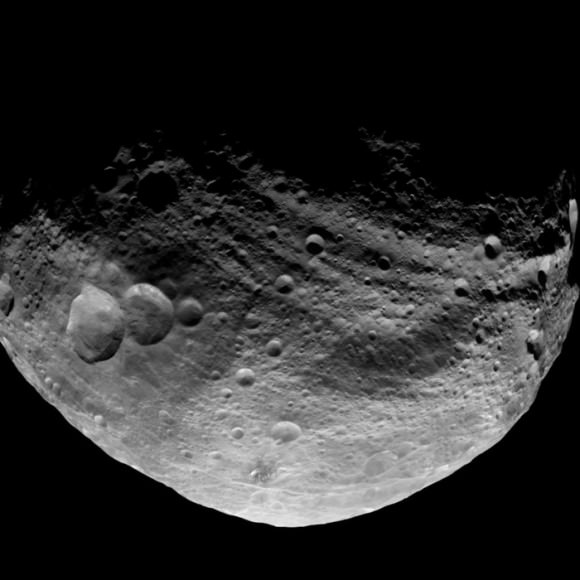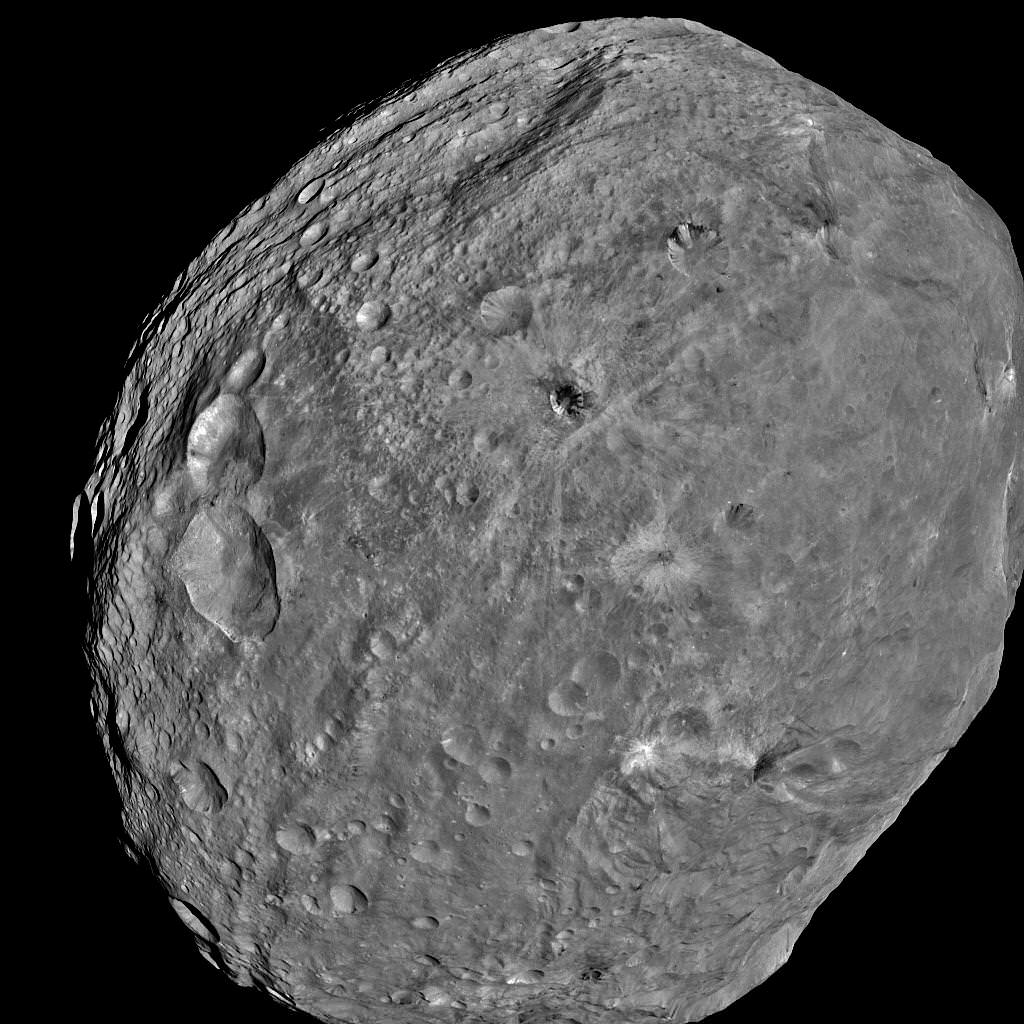[/caption]
NASA has just released the first full frame images of Vesta– and they are thrilling! The new images unveil Vesta as a real world with extraordinarily varied surface details and in crispy clear high resolution for the first time in human history.
Vesta appears totally alien and completely unique. “It is one of the last major uncharted worlds in our solar system,” says Dr. Marc Rayman, Dawn’s chief engineer and mission manager at NASA’s Jet Propulsion Laboratory in Pasadena, Calif. “Now that we are in orbit we can see that it’s a unique and fascinating place.”
“We have been calling Vesta the smallest terrestrial planet,” said Chris Russell, Dawn’s principal investigator at the UCLA. “The latest imagery provides much justification for our expectations. They show that a variety of processes were once at work on the surface of Vesta and provide extensive evidence for Vesta’s planetary aspirations.”

The newly published image (shown above) was taken at a distance of 3,200 miles (5,200 kilometers) by Dawn’s framing camera as the probe continues spiraling down to her initial science survey orbit of some 1,700 miles (2,700 km) altitude. The new images show the entire globe all the way since the giant asteroid turns on its axis once every five hours and 20 minutes.
Vesta and its new moon – Dawn – are approximately 114 million miles (184 million kilometers) distant away from Earth.
“The new observations of Vesta are an inspirational reminder of the wonders unveiled through ongoing exploration of our solar system,” said Jim Green, planetary division director at NASA Headquarters in Washington.

NASA's Dawn spacecraft obtained this image over the northern hemisphere with its framing camera on July 23, 2011. It was taken from a distance of about 3,200 miles (5,200 kilometers) away from the giant asteroid Vesta. Credit: NASA/JPL-Caltech/UCLA/MPS/DLR/IDA
Dawn was launched atop a Delta II Heavy booster rocket in September 2007, took a gravity assist as it flew past Mars and has been thrusting with exotic ion propulsion for about 70 percent of the time ever since.
Dawn will spend 1 year collecting science data in orbit around Vesta before heading off to the Dwarf Planet Ceres.
The science team has just completed their press briefing. Watch for my more detailed report upcoming soon.
And don’t forget JUNO launches on Aug 5 – It’s an exciting week for NASA Space Science and I’ll be reporting on the Jupiter orbiter’s blastoff and more – as Opportunity closes in on Spirit Point !
NASA’s groundbreaking interplanetary science is all inter connected – because Vesta and Ceres failed to form into full-fledged planets thanks to the disruptive influence of Jupiter.
Read my prior features about Dawn
Dawn Spirals Down Closer to Vesta’s South Pole Impact Basin
First Ever Vesta Vistas from Orbit – in 2D and 3D
Dawn Exceeds Wildest Expectations as First Ever Spacecraft to Orbit a Protoplanet – Vesta
Dawn Closing in on Asteroid Vesta as Views Exceed Hubble
Dawn Begins Approach to Asteroid Vesta and Snaps First Images
Revolutionary Dawn Closing in on Asteroid Vesta with Opened Eyes

